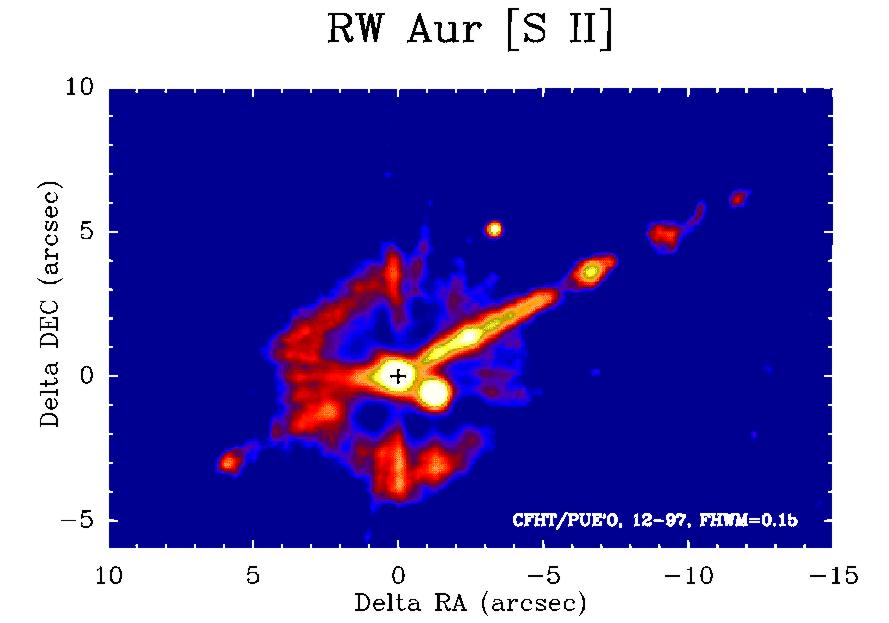
Spectacular Mass Loss Events in Young Stars
Credit: Image courtesy of C. Dougados ¹², S. Cabrit ³, C. Lavalley ² & F. Ménard ¹
¹Canada-France-Hawaii Telescope Corporation
²Observatoire de Grenoble, France
³ DEMIRM, Observatoire de Paris, France

Stars form from the collapse, because of gravity, of molecular
clouds. Dust and gas gradually accumulate in the center until the
proto-stars get big enough and their internal temperature rises to
millions of degrees, at which point nuclear fusion ignites, and a
star is born.
In that process, the initial proto-star must acquire mass. It does so
by accreting material from the nearby molecular. Before being
"swallowed" by the star, a large fraction of the material transits via
an accretion disk. Surprisingly, astronomer also found, about 15
years ago, that the accretion process is also very often coupled to
the opposite process, ejection of mass. Stellar Duality? Nowadyas,
theoretical models suggest that accretion actually cannot proceed
without the help of mass loss to carry away angular momentum. Without
both processes at work at the same time during the early phases of its
evolution, a star would spin-up to so large velocities that it would
spontaneously break-up!
The image presented here shows the spectacular jet, a beam of ionised
material,flowing out of RW Aurigae. RW Aur is a young star located in
Taurus still in the early phases of its evolution. It is also a triple
system. RW Aur A is the source of the collimated mass loss. RW Aur B
is itself a binary (it should be named RW Aur BC really!), but the two
objects are too close to be seen here. The mass loss associated to RW
Aur A is seen in the form of a long streak of luminosity flowing in
diagonal on this image. We are seeing the emission of the ejected
material as it gets shocked and heated by ramming into the ambient
cloud as it moves away from the star (located by the + sign).
Images like this one allow us to study the structure of the outflows
and better understand the origin of the mass loss. In
particular, the size of the jets, their morphology and also kinematics
when coupled with spectroscopy are important. For example, in this
image of RW Aur the jet appears knotty, having a non uniform
brightness along its axis. See this
image for a better view. But other outflows are also observed that
look slightly different. See for example the images of the jets
associated to two other young stars: DG Tau and CW Tau here.
Technical description:
These images were obtained on January and December, 1997, with PUEO,
the adaptative Optics Bonnette, attached to the Canada-France-Hawaii
telescope. The images were obtained in the optical part of the
electromagnetic spectrum, with the help of the FOCAM
camera. Narrow filters centered on the wavelengths of emission lines
typically found in stellar jets were used (i.e. an Oxygen line
[OI]6300A, and a sulfur line [SII]6735A). Images in the adjacent
continuum were also obtained and subtracted to isolate the pure
emission from the jet.
RW Aur, DG Tau and CW Tau are all located in the Taurus molecular
cloud complex, about 450 light years away.



